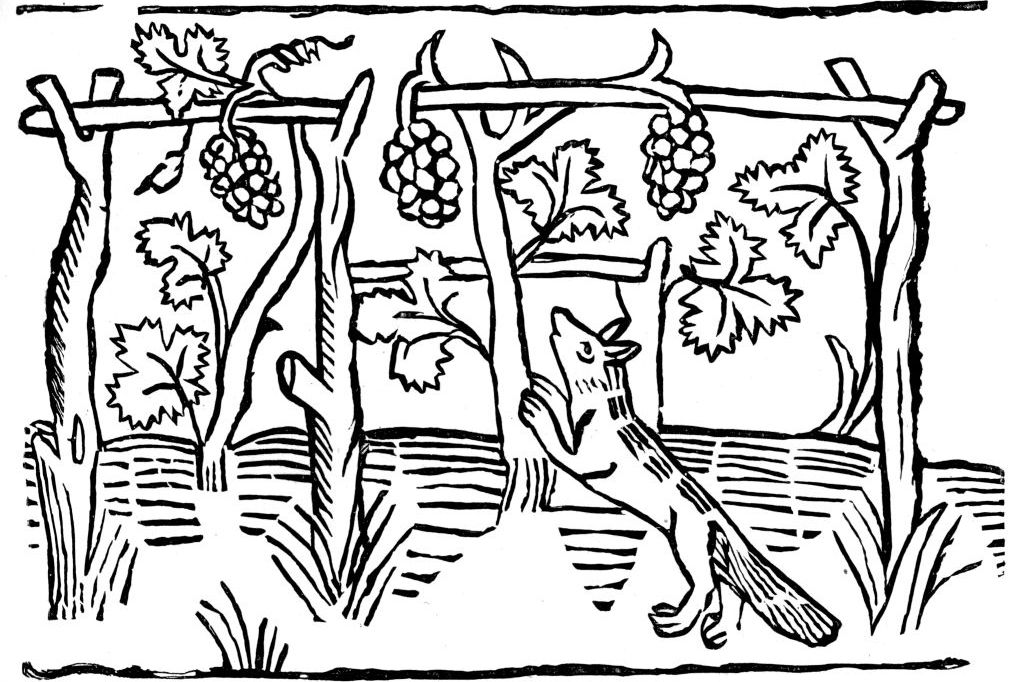In 1668, Frenchman Fontaine released the first volume of Fables, a literary landmark that would lay out a formula for centuries of European folk and fairy tales. Born to a well-to-do family, de la Fontaine became interested in writing upon being inspired by the work of the French poet Malherbe. Between 1668 to 1694, he released six volumes of fables — a total of 239 stories — that drew from diverse sources, from the Roman fabulist Phaedrus to the Panchatantra, an Indian book of fables. De la Fontaine’s fresh and artful retellings of stories like “The Grasshopper and the Ant” and “The Raven and the Fox” turned Fables into an instant classic.
5. Charles Perrault: The Original Mother Goose

A major influence on the Brothers Grimm, Perrault — hailing from France as well — helped transform tales like “Puss in Boots,” “Cinderella,” “Blue Beard,” “Sleeping Beauty,” and “Little Red Riding-Hood” into cultural touchstones. His 1697 book Histoires ou Contes du Temps Passe — better known as The Tales of Mother Goose — was an unexpected departure from his life’s work. Perrault had spent decades working as a government official, but when political bickering forced him to change careers, he turned to writing literary fairy tales for aristocratic literary salons. The career change at age 67 is what made him famous.
6. The Brothers Grimm: Disney before Disney

Jacob and Wilhelm Grimm didn’t write “Rapunzel” or “Snow White,” but they did popularize the tales among the masses. The German-born brothers attended college with the intention of becoming civil servants, but a pair of influential teachers changed their minds — and inspired a love of folk poetry (or naturpoesie) and the arts. The duo gave up any hopes of a law career and began collecting literature that, they believed, emphasized the character of German culture and people. The brothers didn’t view themselves as writers, but as preservationists and historians who were saving common tales from extinction. Published in 1812, their first edition contained 156 fairy tales, including “Hansel and Gretel,” “Rumpelstiltskin,” “The Elves and the Shoemaker,” and “The Fisherman and His Wife.”
7. Hans Christian Andersen: The Original Ugly Duckling

The Danish writer of over 150 fairy tales — including “The Emperor’s New Clothes,” “The Little Mermaid,” “The Princess and the Pea,” and “Thumbelina” — Andersen, born in 1805, came from humble beginnings. His mother was illiterate and his father only had an elementary school education. And when his dad died, Andersen started working at a factory at the age of 11. But he always had an artistic side, and he tried to express his struggles through his work. As a teenager, for example, Andersen was routinely harassed by other boys because he had a high voice, and that abuse inspired him to write “The Ugly Duckling.” “The story is, of course, a reflection of my own life,” he once wrote.
8. Alexander Afanasyev: From Bureaucrat to Bard

Russia’s answer to the Brothers Grimm, Afanasyev was a 19th century Slavic folklorist who published nearly 600 folk and fairy tales. (His works include “The Firebird,” which was famously transformed into a ballet by composer Igor Stravinsky in 1910, and “Vasilisa the Beautiful and Baba Yaga.”) Much like Charles Perrault, Afanasyev spent decades clocking in at a normal day-job for the government. But while working at the Ministry of Foreign Affairs of the Russian Empire, he developed an obsession with collecting and preserving local fairy tales. Unlike many of the other folklorists on this list, Afanasyev regularly cited his sources and often tried to pinpoint where the tale originated.



